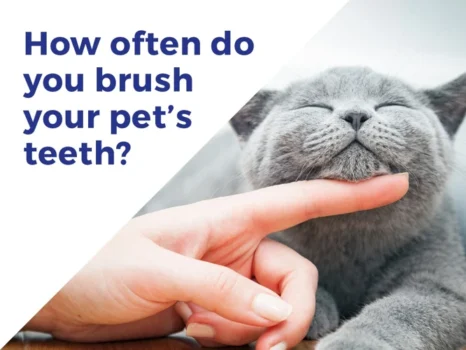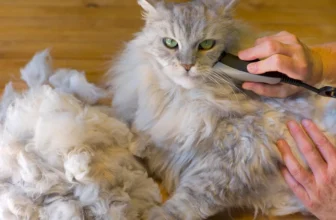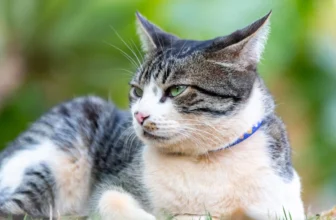Introduction

Taking care of your American Wirehair’s dental health is crucial to their overall wellbeing, and brushing their teeth is a key part of that care. However, figuring out how to brush your cat’s teeth can be daunting for many pet owners. Don’t fret! In this guide, we’ll break down each step to confidently and successfully brush your American Wirehair’s teeth. From supplies to troubleshooting, we’ve got you covered. Let’s get started!
About American Wirehairs
American Wirehairs are a unique breed of cat known for their distinctive wiry coat. They originated in the United States and are a relatively new breed, having been developed in the 1960s.
Physical Characteristics:
| Weight range: | 8 – 15 pounds (3.6 – 6.8 kg) |
| Coat: | Wiry and dense with a crimped or kinky texture |
| Color: | Comes in a variety of colors including tabby, solid, and bicolor |
| Physical features: | Well-muscled body, broad head, and large ears |
Temperament:
American Wirehairs are known for being friendly, playful, and curious. They are also highly adaptable and make excellent pets for families with children or other pets.
Oral Health:
Just like any other breed of cat, American Wirehairs require proper dental care to maintain their oral health. Regular teeth brushing is an important part of their overall dental hygiene routine. Check our guide to brushing your American Wirehair’s teeth for more information.
It is also important to bring your American Wirehair to the veterinarian for regular check-ups, as they may require professional teeth cleaning if there are any signs of gum disease or other dental issues. Regular check-ups can also help in spotting potential oral health issues early on.
Choosing the right dental products, such as an alternative toothbrush or toothpaste that is specifically formulated for cats, can also make a significant impact on your American Wirehair’s oral health. Finally, be sure to keep a lookout for any signs of bad breath, which could indicate a more serious dental issue. Learn more about American Wirehair’s bad breath and what you can do to prevent it.
By making a commitment to your American Wirehair’s dental hygiene, you can help ensure that they maintain good oral health and live a happy, healthy life.
Why Brushing is Important
Brushing your American Wirehair’s teeth is a vital aspect of maintaining their overall health and well-being. Our feline friends are subject to many of the same dental issues as humans, such as tartar, plaque, and gum disease. Without proper dental care, these issues can lead to serious health problems, including infections, painful tooth loss, and even systemic diseases such as heart and kidney disease.
Regular brushing can prevent dental issues before they start. By brushing your cat’s teeth on a regular basis, you can prevent the buildup of tartar and plaque. This, in turn, can help keep your cat’s gums healthy and reduce their risk of gum disease. Additionally, regular brushing can help catch dental issues early on, making them easier and less expensive to treat.
Choosing the right toothbrush and toothpaste is crucial. Not all toothbrushes and toothpaste are created equal. Choosing the right ones for your cat can make the difference between a successful and unsuccessful brushing session. Look for toothbrushes and toothpaste that are specifically designed for cats and are approved by veterinarians. Using human toothpaste or a brush that is too harsh can cause discomfort or harm to your cat.
Frequency matters. How often you brush your American Wirehair’s teeth can also affect their dental health. Ideally, you should brush their teeth every day. However, if daily brushing isn’t possible, aim for at least two to three times per week. The more frequently you can brush, the better.
Brushing your cat’s teeth should be an essential part of their grooming routine. It can prevent dental issues, keep their breath fresh, and even improve their overall health. For more information on the best toothbrush and toothpaste for your American Wirehair, read our article on the best toothbrush and toothpaste for American Wirehairs, or learn more about the ideal brushing frequency in our article on how often to brush your American Wirehair’s teeth.
Supplies You Will Need
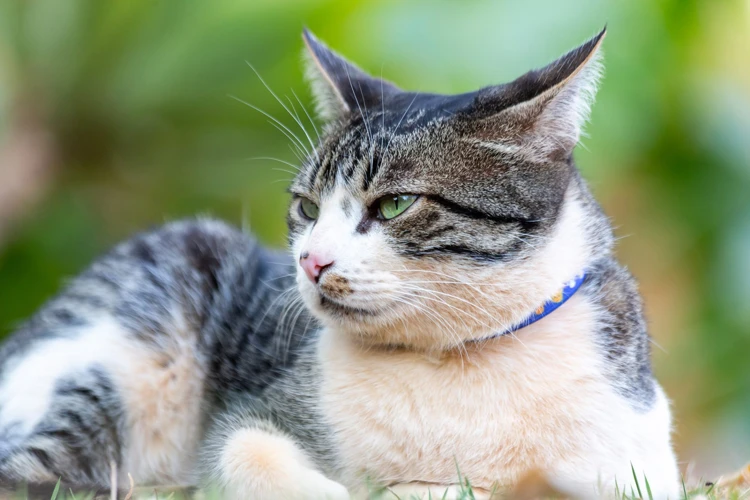
To properly brush your American Wirehair’s teeth, you will need to gather some supplies. First, you will need a cat toothbrush, which is designed specifically for feline teeth. These toothbrushes are usually smaller than human toothbrushes and have softer bristles to avoid irritating your cat’s sensitive gums. Additionally, you will need cat toothpaste, as regular toothpaste can be harmful to your pet. Cat toothpaste usually comes in flavors that cats enjoy, such as seafood or poultry, which can make brushing a little easier.
You will also need a treat to reward your cat after the brushing session. This can be any type of treat your cat enjoys, such as a piece of chicken or a favorite brand of cat treats. Having a reward ready can help make brushing a more positive experience for your cat.
Finally, it’s a good idea to have a towel or two nearby in case your cat gets restless or anxious during brushing. The towel can be used to help hold your cat in place and provide a sense of security. It can also be used to wipe away any excess toothpaste or saliva from your cat’s mouth.
By having these supplies ready before beginning the brushing process, you can help make the experience less stressful for both you and your American Wirehair.
Preparing Your Cat for Brushing
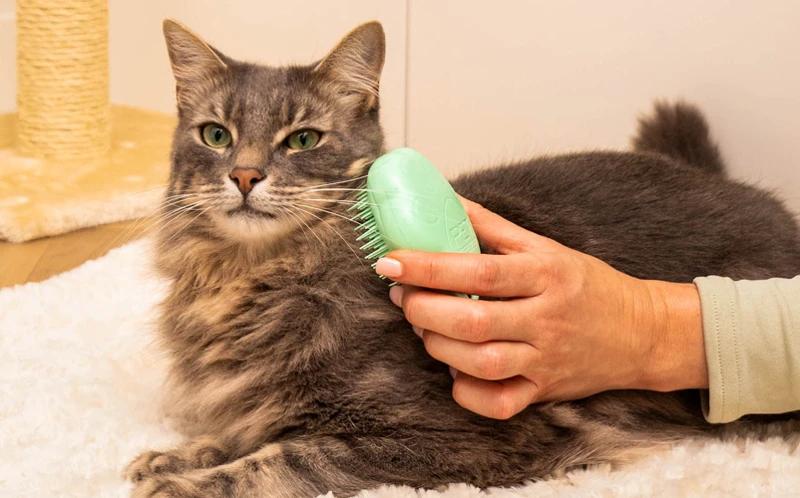
As a pet owner, you understand the importance of taking care of your American Wirehair’s dental health. However, before you can start brushing their teeth, you need to prepare them for the process. This can be a daunting task, but with patience and dedication, it is possible to get your furry friend comfortable with the idea of toothbrushing. Below are some tips to get your cat ready for a brushing session.
Introducing the Toothbrush
When introducing the toothbrush to your American Wirehair for the first time, it’s important to be gentle and patient. Keep in mind that your furry friend may be resistant to this new experience at first, but with persistence and a little bit of training, they will eventually become more comfortable with the process.
One of the most important things you’ll need is a toothbrush specifically designed for cats. These toothbrushes are often smaller and softer than those designed for humans, making them more comfortable for your cat to use. You can find them at your local pet store or online.
Table: Supplies needed when introducing the toothbrush
| Item | Description |
|---|---|
| Toothbrush | Soft bristle, small toothbrush for cats |
| Toothpaste | Cat toothpaste (never use human toothpaste) |
| Treats | Small, healthy treats to reward your cat during the process |
It’s essential to use a toothbrush and toothpaste specifically designed for cats, as human products can make them sick. The toothpaste will have a cat-friendly flavor and may help make the brushing process more manageable. With the right toothbrush and toothpaste, you can help ensure your American Wirehair enjoys brushing their teeth.
Before introducing the toothbrush, you may want to let your cat smell and inspect the toothbrush. This will help them become familiar with the brush, and they’ll be more likely to tolerate it during the brushing process.
Take things slowly when introducing the toothbrush. Start by letting your cat lick the toothpaste off your finger to help them become familiar with the taste. Then, slowly move on to rubbing the toothpaste on their teeth with your finger. This will help them become comfortable with the idea of having something in their mouth.
Be sure to reward your cat with treats for their cooperation and make the experience as pleasant as possible. With patience and gentle persistence, your American Wirehair will eventually become comfortable with the toothbrush, and you’ll be able to start brushing their teeth regularly to help maintain their dental health.
Getting Your Cat Comfortable
One of the most important aspects of brushing your American Wirehair’s teeth is getting your cat comfortable with the process. No cat is going to be thrilled with the idea of having their teeth brushed, but with patience and persistence, you can make the experience as stress-free as possible for your furry friend.
Here are some tips for getting your cat comfortable with teeth brushing:
| TIP | DETAILS |
|---|---|
| Start Slowly | Just like with introducing a toothbrush, start slow. Begin by simply touching your cat’s lips and working up to touching their teeth with your finger. |
| Use Treats | Offer your cat a treat throughout the process. This will help create a positive association with teeth brushing. |
| Use Positive Reinforcement | Give your cat praise and encouragement throughout the process. Let them know they’re doing a good job! |
| Take Breaks | If your cat becomes agitated or stressed, take a break. You want to keep the experience as positive as possible. |
| Be Gentle | Never force your cat to do something they don’t want to do. Be gentle and patient, and your cat will eventually become more comfortable with teeth brushing. |
By following these tips, you can make the process of teeth brushing less stressful for both you and your American Wirehair. Remember to be patient and persistent, and eventually, your cat will become accustomed to the process.
Choosing the Right Time
When it comes to brushing your American Wirehair’s teeth, choosing the right time is crucial. It’s important to pick a time when your cat is relaxed and comfortable to avoid any stress or discomfort.
Here are some tips on choosing the right time:
- Choose a time when your cat is most relaxed, such as after a nap or meal.
- Avoid brushing your cat’s teeth immediately after a high-energy play session.
- Make sure your cat is in a serene environment, away from any distractions or loud noises.
- Try to pick a time when you are calm and at ease, as your cat may pick up on any anxiety you may have.
Remember, patience is key when it comes to brushing your cat’s teeth. Don’t force your cat if they are not in the mood, as this can cause unnecessary stress and make it harder to brush their teeth in the future. By choosing the right time and being patient, brushing your American Wirehair’s teeth can become a stress-free routine.
How to Brush Your Cat’s Teeth

As a cat owner, you may feel perplexed when it comes to brushing your American Wirehair’s teeth. However, it is an important practice that can ensure your feline friend’s dental health is maintained. By following a few simple steps, you can make brushing your cat’s teeth a routine occurrence without much fuss. The brushing process is simple, but it requires some preparation and patience to make sure that your pet is comfortable and doesn’t suffer any injury in the process. Let’s take a closer look at the steps to brushing your cat’s teeth.
Step 1: Start Slowly
When starting to brush your American Wirehair’s teeth, it is crucial to take it slow to avoid overwhelming them. Rushing the process may cause your cat to become anxious or scared. Follow these steps to start slowly:
- Step 1: Begin by allowing your cat to sniff and inspect the toothbrush. It’s a new object, and cats are curious by nature. Let them get familiar with the brush before attempting to use it on their teeth.
- Step 2: Next, try placing the toothbrush near your cat’s mouth, but do not touch their teeth yet. You can start by letting them lick some toothpaste from the brush, to give them a reward for positive behavior.
- Step 3: After a few trials, try to touch the brush to your cat’s teeth gently. Do not apply too much pressure to avoid making your cat uncomfortable. Repeat this step a few times until your cat becomes used to the sensation.
- Step 4: Gradually increase the time you spend brushing your cat’s teeth. Start with just a few seconds and gradually work your way up to a minute or two. Reward your cat with praise and treats for their cooperation.
Remember, the key to successful tooth brushing is patience. Don’t get discouraged if your cat doesn’t seem to enjoy the process at first. By starting slowly and building up their confidence, you can eventually make tooth brushing a routine part of their life and maintain their dental health.
Step 2: Lift the Lip
Once your American Wirehair is comfortable with the toothbrush, you can move on to the next step: lifting the lip. This may seem like a small step, but it’s an important one that will help you get to the teeth and gums. Follow these steps to properly lift your cat’s lip:
- Be gentle and calm: Approach your cat with a gentle touch and a calm demeanor to avoid startling them.
- Hold your cat’s head: Use one hand to hold your cat’s head while using the other to gently lift their lip.
- Be patient: Your cat may resist at first, so it’s important to be patient and allow them to adjust to having their lip lifted.
- Take a closer look: Once you’ve lifted your cat’s lip, take a closer look at their teeth and gums to see if there are any signs of dental problems.
Remember, lifting the lip should be done gently and with care to ensure both you and your cat are comfortable. If your cat seems uncomfortable or agitated, take a break and try again later. With patience and persistence, you can help keep your American Wirehair’s teeth and gums healthy and clean.
Step 3: Brush Gently
Now that you have the toothbrush in your hand and your cat is comfortable, it’s time to start brushing. Remember to brush gently to avoid hurting your pet’s gums. Below are the steps you should follow to ensure that your cat’s teeth are properly brushed:
- Brush the outer surfaces of the teeth. Focus on the area where the tooth meets the gum. This is where plaque and tartar buildup usually occurs.
- Use a circular motion when brushing to ensure that all sides of the teeth are covered.
- If your cat doesn’t like having the toothbrush in their mouth, you can use your finger instead. Wrap gauze around your finger and apply the toothpaste to it. Then, gently rub your cat’s teeth in a circular motion.
- Don’t forget to brush the back teeth. These teeth are often overlooked but are just as important as the front teeth in terms of keeping your cat’s mouth healthy.
- Be patient and take your time. If your cat becomes agitated, stop brushing, and try again later.
By brushing gently, you will ensure that your cat’s dental hygiene is taken care of while avoiding causing any discomfort. Remember to celebrate every successful brushing session with your furry friend and give them a treat or praise to make the experience more enjoyable for them.
Step 4: Reward Your Cat
After you finish brushing your American Wirehair’s teeth, it’s important to reward them for their cooperation. Here are some tips on how to properly reward your cat:
- Treats: Offer your cat a dental treat or their favorite treat. This will help them associate teeth brushing with something positive and be more willing to cooperate next time.
- Praise: Verbal praise can go a long way in reinforcing good behavior. Use a happy tone of voice and let your cat know that they’ve done a great job. This will boost their confidence and make them more likely to cooperate next time.
- Playtime: After brushing your furry friend’s teeth, give them some playtime with their favorite toy to burn off any excess energy. This will also help distract them from any unpleasantness that may have occurred during the teeth cleaning process.
- Attention: If your cat is affectionate, give them plenty of cuddles and attention after brushing their teeth. This will make them feel loved and cared for, strengthening your bond with your furry friend.
Remember, rewarding your cat is an important part of establishing a positive brushing routine. By doing this, you will make it easier to brush their teeth in the future and maintain their dental health. Keep your furry friend’s health in mind, and put in the effort to reward them properly for their good behavior.
Maintaining Your Cat’s Dental Health

As a responsible pet owner, it’s important to maintain your American Wirehair’s dental health to prevent dental diseases. Poor dental health can lead to painful and sometimes life-threatening conditions. To keep your American Wirehair healthy and happy, it’s essential to follow a proper dental hygiene routine. This section will cover important steps to maintain your cat’s dental hygiene, including the significance of regular check-ups and dental products. So, let’s take a look at how you can keep your American Wirehair’s teeth healthy and strong!
Regular Check-ups
Regular check-ups are an important part of maintaining your American Wirehair’s dental health. Just like with humans, dental problems can arise even if you are brushing your cat’s teeth regularly. In fact, dental disease is one of the most common conditions affecting cats. To ensure that your American Wirehair’s teeth and gums are healthy, it’s important to take them to regular check-ups with their veterinarian.
During a check-up, the veterinarian will examine your cat’s teeth and gums to check for any signs of dental disease, such as plaque buildup or gingivitis. They may also take X-rays to check for signs of tooth decay or other dental issues that may be hidden below the gumline.
Regular check-ups can also help catch potential dental problems early on, before they develop into more serious issues. This can save you and your cat from the pain and discomfort that comes with advanced dental disease.
How often should you take your cat for a dental check-up?
The frequency of dental check-ups will depend on several factors, such as your cat’s age, overall health, and dental history. In general, it’s a good idea to take your cat for a check-up once a year. However, if your cat has a history of dental problems, or if they are older or have other health issues, more frequent check-ups may be necessary.
What can you do between check-ups?
While regular check-ups are important, there are things you can do between visits to help maintain your American Wirehair’s dental health. Brushing your cat’s teeth daily is the most effective way to prevent dental disease, but there are also dental treats and toys that can help. Check with your veterinarian for recommendations on dental products that are safe and effective for your cat.
In addition to brushing and dental products, it’s important to feed your cat a healthy diet. Diets high in sugar and carbohydrates can contribute to dental problems, so look for high-quality food that is formulated to promote dental health.
By taking your American Wirehair for regular check-ups and practicing good dental hygiene between visits, you can help ensure that their teeth and gums stay healthy, and that they remain happy and pain-free.
| Benefits of Regular Dental Check-ups for American Wirehairs |
|---|
| – Helps catch potential dental problems early on |
| – Can save your cat from pain and discomfort |
| – Allows for examination of teeth and gums for signs of dental disease |
| – X-rays can detect hidden dental issues |
| – Check-ups can be customized based on your cat’s age, overall health, and dental history |
Other Dental Products
Maintaining your American Wirehair’s dental health requires more than just regular brushing. While brushing is essential, incorporating other dental products into your cat’s routine can help keep their teeth and gums healthy.
Here are some other dental products you can consider using to maintain your cat’s dental hygiene:
- Dental treats: Dental treats are an excellent way to help keep your cat’s teeth clean. These treats are formulated to aid in the removal of plaque and tartar buildup as your cat eats them. Look for treats with ingredients like chlorophyll, which helps to freshen breath, and enzymes that break down bacteria in the mouth. However, be sure to use them in moderation, as they can add extra calories to your cat’s diet.
- Dental chews: Similar to dental treats, dental chews help to mechanically clean your cat’s teeth. Chewing also helps stimulate your cat’s saliva flow, which can help neutralize the acids produced by bacteria in the mouth. Like dental treats, dental chews should be used in moderation.
- Water additives: Adding an oral hygiene solution to your cat’s water bowl can help reduce bacteria in their mouth and freshen breath. These additives typically contain enzymes that break down bacteria and plaque-fighting agents like chlorhexidine. However, some cats may not like the taste or smell of the additive, so be sure to introduce it gradually.
- Oral sprays: Similar to water additives, oral sprays can also help freshen breath, reduce bacteria, and promote healthy gums. These sprays can be used in between brushings or as a quick dental hygiene option for cats who are resistant to regular brushing.
- Tooth wipes: Tooth wipes are an alternative to toothbrushes for cats who are not comfortable with brushing. These wipes are usually infused with enzymes and other ingredients that can help maintain your cat’s dental health. They can be an excellent option for cats who are resistant to other dental products.
Incorporating any of these products into your cat’s routine can help maintain their dental health. However, it is essential to consult with your veterinarian before introducing any new dental products. Your veterinarian can recommend the best products and provide guidance on how to use them safely and effectively.
Troubleshooting
As much as you try to create the perfect brushing routine for your American Wirehair, there may come a time when things don’t go as smoothly as planned. Fret not, as there are common issues that cat owners face when brushing their cat’s teeth, and we have come up with solutions to help you troubleshoot these problems. Let’s take a look at some of the difficulties you may encounter while brushing your feline friend’s teeth and how to overcome them.
My Cat Hates Brushing
Have you ever tried to brush your American Wirehair’s teeth only to be met with resistance? Don’t worry, it’s not uncommon for cats to hate the experience of having their teeth brushed. Here are some tips to help your cat feel more comfortable during the tooth-brushing process:
- Start Slow: if your cat is not used to having their teeth brushed, start by getting them used to the toothbrush first. Allow your cat to sniff and explore the toothbrush on their own terms. Reward them with treats and positive reinforcement for showing interest in the toothbrush.
- Go at Their Pace: avoid rushing your cat into the tooth-brushing process. Gradually increase the amount of time you spend brushing their teeth to allow them to become more comfortable with the process.
- Use a Soft Brush: using a soft-bristled toothbrush will be less abrasive and more comfortable for your cat. Plus, it will be less intimidating than a larger or firmer brush.
- Try Different Toothpaste: some cats may not like the taste or smell of the toothpaste. Experiment with different flavors and types of toothpaste to find one that your cat enjoys.
- Make it Positive: reward your cat with treats and praise for allowing you to brush their teeth. By associating the experience with positive reinforcement, your cat may become more willing to participate in the tooth-brushing process.
Remember, it’s important to be patient and understanding when it comes to your cat’s dental health. If your cat continues to resist tooth-brushing, talk to your veterinarian about other dental care options and strategies.
My Cat’s Gums Are Bleeding
If you notice your cat’s gums are bleeding while brushing, it can be a cause for concern. Here are some steps you can take to address this issue:
| Step | Action |
|---|---|
| 1 | Stop brushing immediately. Continuing to brush when your cat’s gums are bleeding can make the problem worse and could lead to infection. |
| 2 | Check for any visible signs of injury or infection such as cuts or redness. If you notice any major concerns, contact your veterinarian for further recommendations. |
| 3 | Wait a day or two before trying again. Give your cat’s gums time to heal before attempting to brush their teeth again. |
| 4 | Try using a softer toothbrush or toothpaste specifically designed for pets. A toothbrush that is too hard may be causing your cat’s gums to bleed. |
| 5 | Brush more gently. If you are brushing too hard, it can cause the gums to bleed. Be gentle, and use a circular motion on the teeth and gums. |
| 6 | If the bleeding persists, you may need to consult with your veterinarian to rule out more serious issues. Your veterinarian may recommend a professional cleaning or further diagnostic testing to ensure your cat’s dental health. |
It’s important to remember that bleeding gums can be a sign of gingivitis or periodontal disease, both of which can lead to serious health problems if left untreated. Taking care of your American Wirehair’s dental health is important for their overall wellbeing. If you are having difficulties with brushing, don’t hesitate to speak with your veterinarian for further guidance.
Conclusion
In conclusion, taking care of your American Wirehair’s dental health is an important part of their overall wellbeing. Brushing their teeth regularly can prevent dental diseases and maintain good oral hygiene.
Remember to gather all the necessary supplies, introduce the toothbrush slowly, and get your cat comfortable in preparation for brushing. Take your time and be gentle when brushing your cat’s teeth, rewarding them for their cooperation.
Maintain your cat’s dental health by scheduling regular check-ups with your veterinarian and considering other dental products such as dental treats and water additives.
If your cat hates brushing, try different techniques and be patient. If your cat’s gums are bleeding, stop brushing and consult with your veterinarian.
With patience and perseverance, you can successfully maintain your American Wirehair’s dental health, ensuring they live a happy and healthy life free from dental diseases. So, start brushing today and see the difference it can make!
Frequently Asked Questions
What is the ideal frequency for brushing my American Wirehair’s teeth?
Brushing your American Wirehair’s teeth at least once a day is ideal. However, if that’s not possible, try to do it at least three times a week.
What kind of toothbrush should I use?
It’s best to use a toothbrush specifically designed for cats, with soft bristles that won’t irritate their gums.
What type of toothpaste should I use?
Never use human toothpaste on your cat. Instead, use a toothpaste specially made for cats, with flavors like chicken, beef, or fish to make it more appealing to them.
What if my cat is not comfortable with a toothbrush in their mouth?
Start by gently rubbing your cat’s teeth and gums with your finger. Then, gradually introduce the toothbrush over time.
Can I use dental chews as a substitute for brushing?
Dental chews can be a helpful addition to your cat’s dental health routine, but they should not be used as a substitute for brushing their teeth.
How can I tell if my cat has dental issues?
Symptoms like bad breath, teeth discoloration, drooling, and difficulty eating can indicate dental issues. Regular check-ups with your veterinarian can help identify early signs of dental problems.
Can I use vinegar or baking soda to clean my cat’s teeth?
It’s not recommended to use vinegar or baking soda on your cat’s teeth, as they can cause damage to the enamel and gums.
Should I be concerned if my cat’s gums bleed during brushing?
Gums bleeding during brushing is not uncommon, but if it continues or is excessive, it’s best to consult with your veterinarian to identify any underlying issues.
Can I brush my senior cat’s teeth?
Yes, you can and should continue to brush your senior cat’s teeth, as dental health is important at any age.
What is the best way to introduce my cat to brushing?
Start by introducing the toothbrush gradually, using positive reinforcement like treats and praise. Make brushing a positive experience for your cat.

